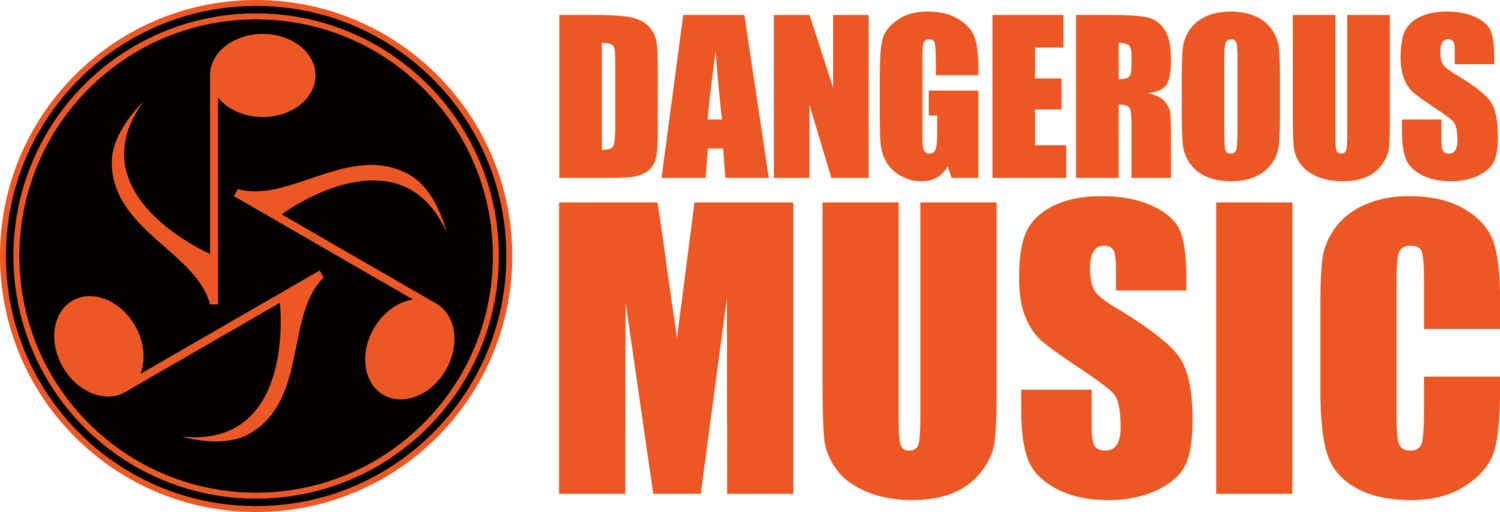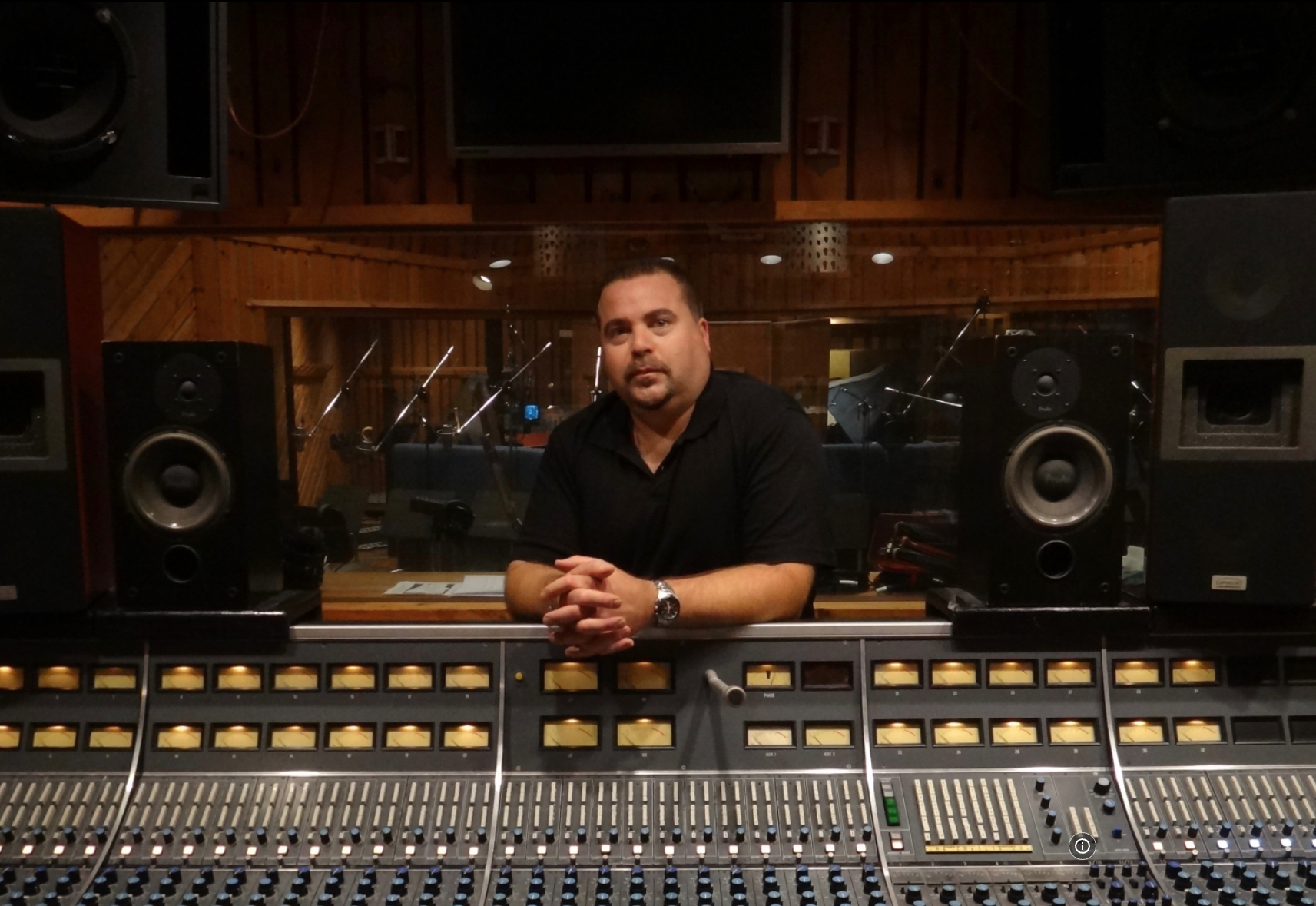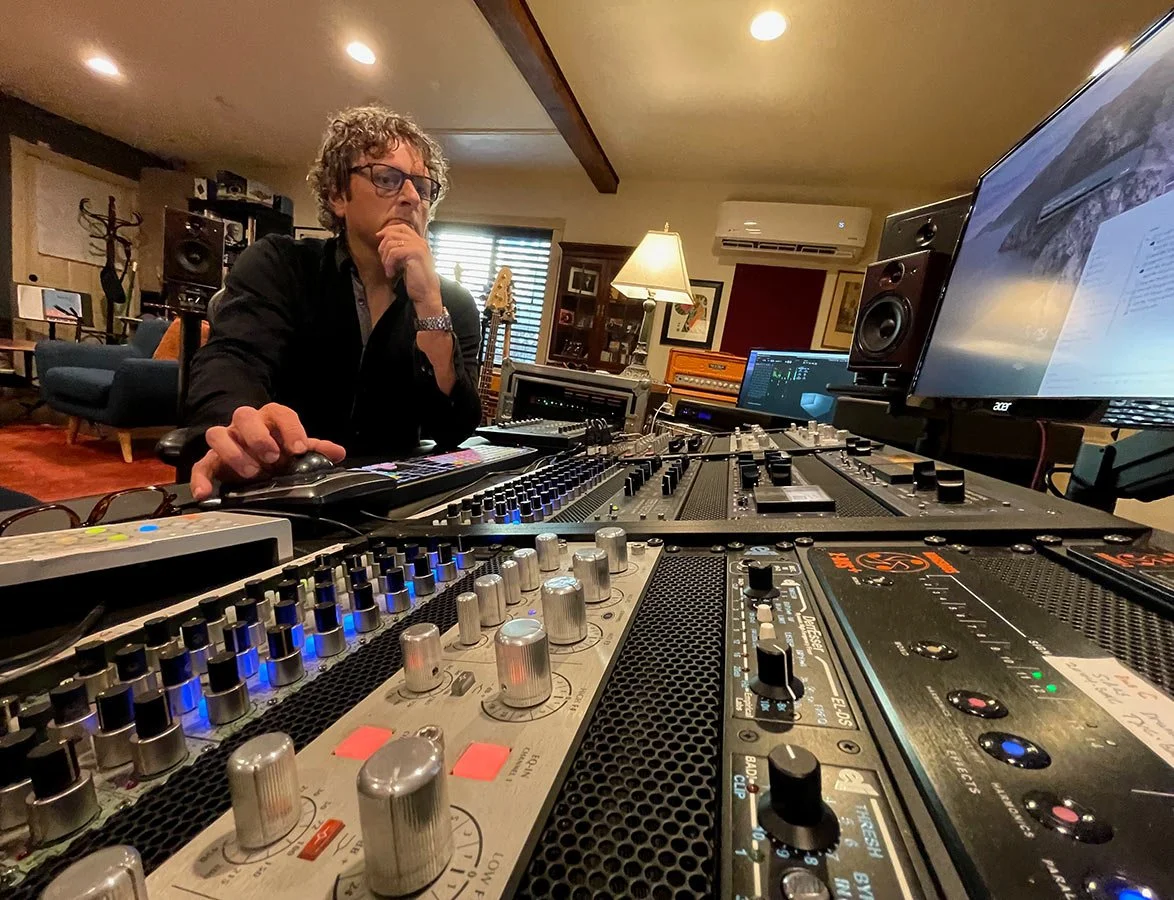FROM CONSOLES TO COMPACT MIXING AND PRODUCING - DAVE ISAAC
“With the transparency of Dangerous gear, I can create the sound that I hear in my head and the sound that the artists want.”
By Brooke Bilyj
Growing up in Detroit in the 1960s, Dave Isaac’s earliest memories revolve around music. Between his gospel-loving mother and his father, who grew up with James Brown, Dave’s parents played music in the house constantly.
“I can remember looking through the bars of my crib, watching a 45 vinyl record spinning around, and I remember that song to this day,” Dave says, recalling the Ray Charles classic, I’m Busted. “When I look back in hindsight, that was the first sign to me that music was my destiny.”
After he outgrew the crib, Dave’s parents allowed him to operate the record player, and he’d lay on the floor surrounded by the speakers, close his eyes and just listen. He’d imagine “being down the street at Motown, watching the artists and producers create magic.” It wasn’t long before Dave’s dream came true.
During the 60s, Dave explains, “Motown was taking over the world.” Artists like Marvin Gaye, Stevie Wonder, Diana Ross, Gladys Knight, and Smokey Robinson weren’t just names he heard on the radio; they were neighbors who’d grown up in or around the tenements of Detroit where Dave lived. “These artists would turn on the water hydrants for us in the summer and give us candy or money as they drove their Cadillacs down the street,” he recalls. “Motown wasn’t just a label, like the rest of the world saw it. It was a neighborhood collective.”
Seeing people from the projects rise to fame gave Dave aspirations that he could do the same. “I might see them on the street one day, and on the Ed Sullivan show the next week,” he says. “As a kid, it felt like there was nothing you couldn’t achieve, musically, if you put your mind to it.”
Dave dove headfirst into Detroit’s music scene and devoted his life to making music like the records he remembered spinning as a kid.
Getting into the music scene
Dave got his first guitar as a gift from his dad in third grade. By fifth grade, he had a few formal lessons and taught himself to play by ear. He spent most of junior high playing bass and guitar, and by age 14, he was on the road performing professionally.
One night after seeing Dave’s band play, Parliament-Funkadelic collaborator Donnie Sterling invited the young musicians to the studio to watch the famous funk collective in action. “George Clinton came out of the live room and saw the size of my hands, because I have big hands, and he asked me if I wanted to do handclaps with them,” Dave recalls, laughing about his first encounter with the legendary Prime Minister of Funk. “Here I am, just going to see them in the studio
and the next thing you know, I’m recording with them in the studio. I decided I had to be around that. I had to figure out a way to stay in that environment.”
Soon, he was playing bass and guitar with other artists around town. Dave left high school to focus on music full-time, and by age 17, he’d earned enough money to buy his own house. Unfortunately, less than a month after moving in, someone broke in and stole everything. Being in the Motor City, Dave started working at an automobile factory to earn back enough money to replace his gear.
He began interning at studios around town, often without pay, until one day he got his big break. Garzelle McMurray at Sound Suite Studios asked him to fill in for his mentor and engineer Steve King on the day that R&B artist, Anita Baker was recording. “This was the turning point for me!” Dave says. “From that point, I started working with everybody you could possibly think of around the Detroit-Chicago-Ohio area.”
Between 1986 and 1992, Dave worked with artists ranging from gospel singers like The Clarke Sisters, The Winans, and Fred Hammond, to “the godfathers of techno: Kevin Saunderson, Jeff Mills, and Juan Atkins,” to R&B stars like Gladys Knight, El DeBarge, Aretha Franklin, R. Kelly, Aaliyah, Rachelle Ferrell, Patti Labelle and more. Meanwhile, Dave’s film contributions in Detroit during this time include “Lethal Weapon 2” and “White Men Can’t Jump.”
Earning audio accolades
Dave quickly made a name for himself in Detroit as a masterful engineer and producer. One day, he “got a call from Whitney Houston’s management to work on her album, I’m Your Baby Tonight,” which ended up going quadruple platinum. While working on the project in L.A., Dave got a glimpse into “the next frontier,” and began thinking about moving west.
It wasn’t until a few years later, upon the urging of Michael Jackson’s drummer Ricky Lawson, and Los Angeles mentor and legendary Motown engineer Barney Perkins, that Dave finally moved to California in 1992. Within his first eight months in L.A., Dave added to his repertoire, touring with Paul Jackson Jr., co-producing with legendary Motown producer Frank Wilson, and working with famous acts like Stevie Wonder, Bette Midler, Madonna, Billy Idol, Sheila E., George Duke, Toni Braxton and of course, Michael Jackson.
Eventually, Dave met renowned jazz bassist and producer, Marcus Miller, and the two began collaborating to produce albums for artists including Wayne Shorter, Eric Clapton, David Sanborn, and Luther Vandross, as well as scores for TV and motion pictures. Dave’s contributions to film and TV audio include “Everybody Hates Chris,” “Good Hair,” “The Great White Hype,” “A Low Down Dirty Shame,” “The Brothers,” “This Christmas,” “King's Ransom,” “Guess Who,” “Head of State,” and more.”
Dave’s West Coast accomplishments led to multiple award nominations and three GRAMMY wins. As his honors accumulated, Dave finally felt the gratification that he’d made it.
“Anything can happen when you stay focused on your dream,” he says. “Everybody thought I was crazy for quitting my nine-to-five job at the factory to pursue music again—even my mother! But once she started to hear the music on the radio, and I started to send her platinum and gold plaques and awards, she started to see that the impossible was possible.”
Dave says that the years he spent intently listening to music as a child prepared his ears for professional engineering. His fine-tuned listening abilities were the “gift that attracted everybody I worked with,” he says.” “My gift was that I could tell you how to make something sound more like a record, or what to remove. I became a muse for people, telling them what the music was missing.”
Discovering Dangerous
Throughout his mixing career from Detroit to L.A., Dave worked on “just about every console in town,” he says, from MCI to SSL to Euphonix. Around 2003, as Digital Audio Workstations (DAWs) were gaining popularity, Dave realized that he wasn’t making full use of the console in the studio he shared with Marcus Miller. Equipped with Pro Tools, Dave began working primarily from home, where he didn’t have the space to install a large-format console.
“I was thinking about getting a small console, but they were really expensive at the time, and the upkeep was a hassle,” he says. “I needed something to give me the sound of a console without taking up the real estate of a console in my house—and that’s where the Dangerous 2-BUS-LT came into play. It allowed me to have the sound of a studio at home.”
Dave’s first analog summing mixer delivered dimension and massive headroom from just one rack space. He paired the 2-BUS-LT with the Dangerous MONITOR-ST for precise playback, with flexible listening options from mono to stereo and from the left speaker to the right.
With this minimal setup inside his small home studio, Dave mixed albums for the top echelon of stars—perhaps most prominently including Prince. When Prince’s keyboardist, Morris Hayes, initially visited Dave’s studio, he had some hesitations about the lack of a large console. “He felt as though Prince would want me to mix out of a studio,” Dave recalls. “I said, ‘Let me mix it here, and then if that’s needed, I’ll go to the studio.” When Dave submitted the initial Dangerous mix, Prince was pleased, confirming that Dave could turn out professional quality mixes from home. (Dave mixed “Born 2 Die” from the 2021 posthumously released Prince album “Welcome to America” on that setup.)
Dave Isaac (Prince, Stevie Wonder, Bruno Mars) talks about his career path into the industry, learning to listen, and transitioning from large format consoles to the Dangerous Music 2-BUS+ analog summing mixer and CONVERT-8 digital converters.
Focusing on the music
After that point, Dave continued adding more Dangerous gear to his rig—including the 2-BUS+, the CONVERT-2, the CONVERT-8, the COMPRESSOR, and the BAX EQ.
“I never thought I would need a Baxandall EQ,” Dave admits, “but once I heard it, it sounded like I was working on a vinyl record. It made it easier for me to find and create detail in the mixes I was making, and I started to create a sound that people would recognize.”
The Dangerous 2-BUS+ analog summing mixer became another critical component of Dave’s signature sound, as it delivered the transparency and flexibility for every style of music he mixed. “It allowed me to create the sounds that I wanted each genre to have,” he says. “If it was R&B or pop, I could add more of a X-Former or the Paralimit to make it sound more in-your-face. If it was something for TV, I could take the custom color circuits off and just keep it clean. You can’t necessarily do that with a console because a console has a certain amount of sound saturation. With the transparency of Dangerous gear, I can create the sound that I hear in my head and the sound that the artists want.”
After experiencing the versatility of Dangerous gear to tackle any genre, Dave jokes that he misses working on an SSL console like he misses the snow in Detroit. He never has to shovel snow in L.A., and he never has to deal with faders or tape machines in his studio anymore, either.
“I don’t miss having to recall a project that took an hour to get it as close as we could get it to where it was,” he says. “Now, I can easily recall the settings on the Dangerous gear. It allows me to work faster and hear it easier, so I can focus more on the music than the gear. That translated to the clients, too, because everybody was happy with what I was turning in. They thought I must have done it in a professional studio, even though I didn’t have to leave my home.”
Educating audio engineers
Although Dave stopped attending high school once he hit the road as a professional musician, he ended up earning his GED around the time he would have graduated. In fact, his scores were so high that Wayne State University offered him a scholarship to study there. However within his first year in attendance, he was too busy working in the studio to take time off for class.
Through the years, Dave’s real-world industry experience provided opportunities for him to share his expertise through speaking engagements around the country. After hearing Dave speak at an event, Musician’s Institute in L.A. approached him about filling in for another teacher for a few weeks. A few weeks turned into another quarter, and then another, and eventually became a 10-year teaching stint.
Similarly, another opportunity sprung from UCLA, where Dave taught for about eight years. His unorthodox approach—teaching from real-world experience rather than academic expertise—made him popular with the students, who knew Dave would give it to them straight.
Instead of only teaching students about traditional studio setups with large-format consoles that most of them couldn’t afford, Dave explained the compact-but-powerful setup in his studio to show them more accessible alternatives for producing professional-quality audio. Teaching allowed Dave to give back to the industry by sharing his knowledge with the next generation of engineers.
“I have students who have gone on to win their own GRAMMY awards and be successful themselves, which was my goal,” says Dave, who often receives calls and letters from former students, thanking him for his impact on their careers.
A few years ago, Wayne State offered Dave the opportunity for an honorary doctorate degree to recognize his contributions to music and film. Between his teaching responsibilities, speaking gigs, and also teaching martial arts, Dave realized he was stretching himself too thin to attend the months needed at WSU to accept the honor. Around 2019, he decided to step back from teaching and focus again on his mixing and producing career.
Recording engineer and mixer, Larry Whitt (Usher, Erica Campbell, Faith Evans) talks about rising up in the industry with Dave Isaac
Looking toward the future
As digital recording technologies have evolved, Dave says Dangerous gear has been key to capturing the warm, rich tones that remind him of the vinyl records he grew up with.
“The Dangerous gear allows me to have that analog sound as I work with digital formats, whether it’s DAWs or plugins,” he says. “The gear allows me to hear the plugins better. It allows me to hear the differences in the DAWs or the speakers or the cables that I use.”
This detailed nuance and sonic control keep Dave on the cutting edge of engineering trends. Over the last couple years, he’s been focused on reinventing himself by refining his small studio setup to produce even higher quality audio.
“One thing with reinvention is you need to learn from the past and bring it to the present to create something that lasts into the future,” he says. “Now I’m looking for ways to keep making great quality music and not just leaving it to plugins or presets. I’m thinking more about the sonic quality of mastering to preserve music in high-res for the future, so my goal for this year is to make sure that my setup is truly mastering quality.”
To that end, Dave is exploring the potential for custom gear and new equipment from Dangerous Music. “I want to make sure that my setup is the best it can possibly be,” he says, “and with Dangerous, I know I’m using the best of the best.”







